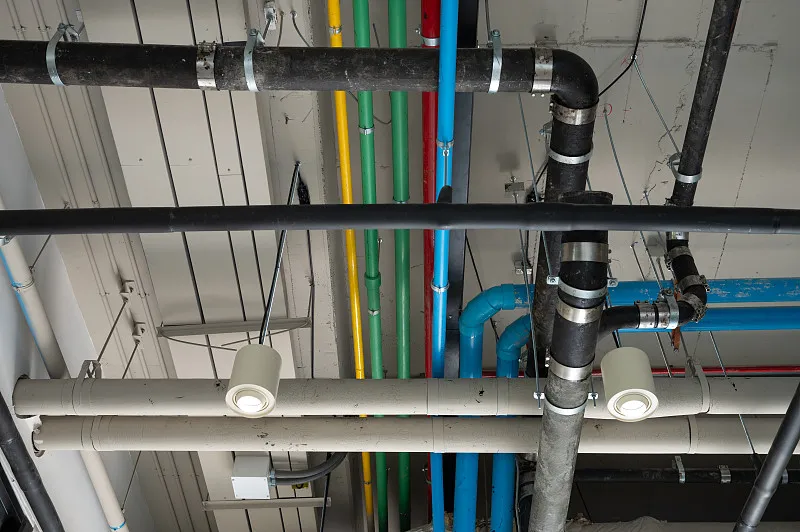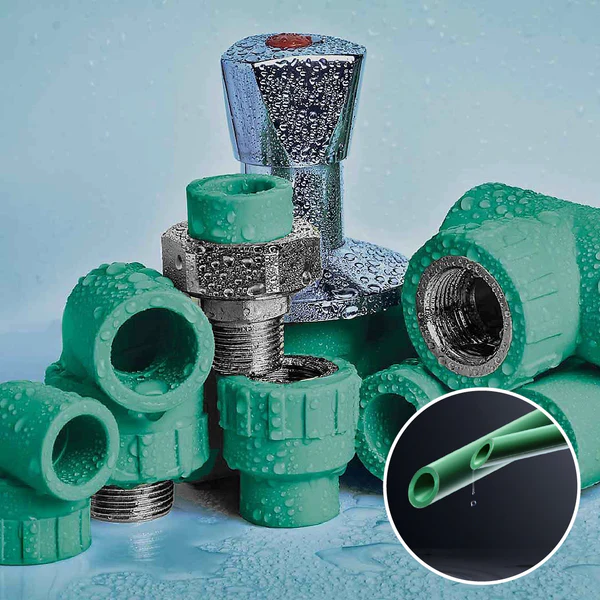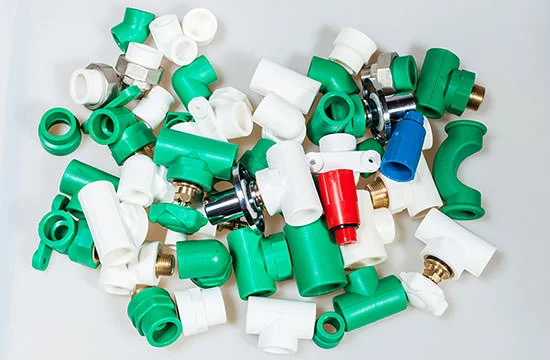Introduction PPR Pipe
The PPR Pipe and HDPE pipe market in the Americas is experiencing rapid growth, driven by a variety of factors ranging from increased infrastructure development to a rising demand for sustainable and cost-effective solutions. As industries increasingly turn to plastic-based piping materials, both PPR pipes (Polypropylene Random Copolymer) and HDPE pipes (High-Density Polyethylene) are becoming essential components in water distribution systems, gas distribution, and various other industrial applications.
This article provides an in-depth forecast of the PPR pipe and HDPE pipe market in the Americas, covering trends, growth factors, challenges, and projections for the period up to 2027. It also looks at regional dynamics in North America and Latin America, with a focus on how these markets are expected to evolve.
What Are PPR Pipe?
Characteristics and Benefits of PPR Pipe
PPR pipes are made from polypropylene random copolymer, a type of thermoplastic polymer. They are known for their robustness, resistance to corrosion, and ability to handle both hot and cold water. PPR pipes offer several key advantages:
- Durability: PPR pipes are resistant to high temperatures, chemicals, and scaling, making them suitable for both residential and industrial applications.
- Low Maintenance: With their smooth interior surface, PPR pipes prevent the build-up of dirt and minerals, reducing the need for regular cleaning.
- Cost-Effective: Compared to traditional metal pipes, PPR pipes are lightweight, easy to install, and less expensive.
- Environmentally Friendly: PPR pipes are 100% recyclable, which makes them a more sustainable option compared to other materials.
Applications of PPR Pipe in Plumbing and Construction
PPR pipes are predominantly used for water supply systems, including hot and cold water distribution, irrigation, and heating systems. They are also used in industrial applications such as chemical processing, gas transportation, and in some cases, the food and beverage industry.
What Are HDPE Pipes?
Understanding HDPE Pipes
HDPE pipes are made from high-density polyethylene, a polymer that is known for its strength, flexibility, and resistance to environmental stress cracking. HDPE is one of the most commonly used materials in the plastic pipe industry due to its versatility and long lifespan.
Benefits and Uses of HDPE Pipes
- Strength and Flexibility: HDPE pipes are highly resistant to external pressures and can bend without cracking, making them ideal for use in areas with shifting soil or in earthquake-prone regions.
- Resistance to Corrosion and Chemicals: HDPE pipes are immune to corrosion and can handle harsh chemicals, making them suitable for a wide range of industrial applications.
- Long Lifespan: HDPE pipes have a life expectancy of over 50 years, even in challenging environmental conditions.
- Ease of Installation: These pipes are lightweight and can be fused together, eliminating the need for fittings and reducing the risk of leaks.
Applications of HDPE Pipes
HDPE pipes are widely used for water and gas distribution, sewage systems, stormwater management, and industrial fluid transportation. The ability to withstand high pressure makes them a top choice for applications that require both flexibility and strength.
Market Overview: Americas PPR Pipe and HDPE Pipe Market
The PPR and HDPE pipe market in the Americas is expected to see significant growth over the next few years, driven by several factors:
- Urbanization and Infrastructure Growth: As cities in North America and Latin America continue to expand, the demand for reliable water distribution and sewage systems increases, boosting the need for both PPR and HDPE pipes.
- Water Conservation Initiatives: Governments and municipalities are focusing on water conservation, and plastic pipes like PPR and HDPE are becoming preferred choices due to their leak-free and corrosion-resistant nature.
- Demand for Sustainable Solutions: Both PPR and HDPE pipes are increasingly recognize for their eco-friendly properties, as they are recyclable and have a lower environmental impact compared to traditional metal pipes.
Key Market Drivers
- Growth in Residential and Commercial Construction: Increasing demand for new housing, commercial buildings, and infrastructure projects is driving the need for plumbing systems that utilize both PPR and HDPE pipes.
- Cost-Effectiveness: Both materials offer cost savings over traditional pipes, which has encouraged their adoption in municipal and industrial applications.
- Technological Advancements: Ongoing improvements in pipe manufacturing processes and pipe fusion technologies are expanding the potential applications of both PPR and HDPE pipes.
Key Market Challenges
- Price Fluctuations: While plastic pipes are generally cost-effective, fluctuations in raw material prices for polyethylene and polypropylene can impact the overall cost of HDPE and PPR pipes.
- Regulatory Barriers: Different regions have varying regulations regarding the use of plastic pipes, which can slow market growth in certain areas.
- Competition from Alternative Materials: Copper, steel, and other traditional piping materials continue to compete with plastic pipes, especially in industries where higher pressure ratings are require.
Regional Analysis: PPR and HDPE Pipe Market in North America
Market Trends in the U.S. and Canada
In North America, the demand for both PPR pipes and HDPE pipes is growing steadily. The United States and Canada are witnessing increased investments in infrastructure, driven by both public and private sector initiatives. These include improvements to municipal water systems, sewerage, and stormwater infrastructure, which are key applications for HDPE and PPR pipes.
Government regulations promoting sustainability and environmental protection are also contributing to the shift toward plastic piping systems. In particular, there has been a notable increase in the use of HDPE pipes for water distribution and sewage systems.
Government Regulations and Standards
In North America, stringent regulations govern the use of pipes for drinking water and industrial applications. Standards such as NSF/ANSI 61 and ASTM F876 for PPR pipes and ASTM D3035 for HDPE pipes ensure that these materials meet safety and performance standards.

Regional Analysis: PPR and HDPE Pipe Market in Latin America
Growth Prospects in Latin American Countries
Latin America is seeing an increase in demand for both PPR and HDPE pipes, particularly in countries like Brazil, Mexico, and Argentina. This demand is largely drive by rapid urbanization and the need for improved infrastructure. As the region’s middle class grows, the demand for better-quality water and sanitation systems is also on the rise, pushing the need for advanced piping solutions.
Challenges and Opportunities for PPR and HDPE Pipes
While the market for plastic pipes is expanding in Latin America, challenges such as economic volatility and varying regulatory frameworks can hinder growth. However, opportunities abound in sectors like agriculture, which requires reliable water distribution systems, and the growing construction industry.
PPR and HDPE Pipe Market Outlook: Forecast to 2027
As of the forecast for 2027, the Americas PPR and HDPE pipe market is expecte to continue its upward trajectory, with growth fueled by:
- Rising infrastructure investments
- Sustainability goals driving the shift from metal to plastic pipes
- Technological advancements in plastic pipe manufacturing and fusion techniques
The market is expecte to experience a CAGR (Compound Annual Growth Rate) of 5-6% from 2023 to 2027.
Competitive Landscape: Key Players in the Market
Several major players are dominating the Americas PPR and HDPE pipe market, including:
- Wavin
- Mexichem
- Georg Fischer Piping Systems
- Aliaxis Group
- Uponor
These companies are focusing on strategic partnerships, acquisitions, and innovations to maintain their leadership positions in the market.
Conclusion
The PPR and HDPE pipe market in the Americas is set for continued growth, drive by infrastructure expansion, increasing urbanization. And the rising demand for sustainable water distribution solutions. As governments and industries shift toward more cost-effective, durable, and environmentally friendly piping options. PPR and HDPE pipes will play a crucial role in shaping the future of plumbing and water management systems in the region.
FAQs
- What are the main advantages of using PPR and HDPE pipes?
Both PPR and HDPE pipes offer superior durability, corrosion resistance, ease of installation, and cost-effectiveness compared to traditional metal pipes. - How are PPR and HDPE pipes different?
PPR pipes are made from polypropylene, whereas HDPE pipes are made from polyethylene. HDPE pipes are more flexible, while PPR pipes are ideal for both hot and cold water applications. - What is the growth rate of the PPR and HDPE pipe market in the Americas?
The market is expected to grow at a CAGR of 5-6% from 2023 to 2027. - Which industries use PPR and HDPE pipes the most?
These pipes are commonly use in water supply, sewage systems, gas distribution, and irrigation, with increasing adoption in construction and agriculture. - What are the key challenges facing the PPR and HDPE pipe market?
Fluctuating raw material prices, regulatory challenges, and competition from traditional piping materials are among the key challenges in the market.


















